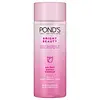What's inside
What's inside
 Key Ingredients
Key Ingredients

 Benefits
Benefits

 Concerns
Concerns

No concerns
 Ingredients Side-by-side
Ingredients Side-by-side

Water
Skin ConditioningGlycerin
HumectantNiacinamide
SmoothingPolysorbate 20
EmulsifyingPhenoxyethanol
PreservativeParfum
MaskingAcrylates/C10-30 Alkyl Acrylate Crosspolymer
Emulsion StabilisingHydroxypropyl Cyclodextrin
MaskingDisodium EDTA
Pentylene Glycol
Skin ConditioningSodium Hydroxide
BufferingSodium Acetylated Hyaluronate
HumectantAllantoin
Skin ConditioningTocopheryl Acetate
AntioxidantSodium Hyaluronate
HumectantIodopropynyl Butylcarbamate
PreservativeSodium Hyaluronate Crosspolymer
HumectantHydrolyzed Sodium Hyaluronate
Skin ConditioningCystine
MaskingGlycine
BufferingSodium Ascorbyl Phosphate
AntioxidantEthylhexylglycerin
Skin ConditioningSodium Carbonate
BufferingSodium PCA
HumectantSodium Chloride
MaskingWater, Glycerin, Niacinamide, Polysorbate 20, Phenoxyethanol, Parfum, Acrylates/C10-30 Alkyl Acrylate Crosspolymer, Hydroxypropyl Cyclodextrin, Disodium EDTA, Pentylene Glycol, Sodium Hydroxide, Sodium Acetylated Hyaluronate, Allantoin, Tocopheryl Acetate, Sodium Hyaluronate, Iodopropynyl Butylcarbamate, Sodium Hyaluronate Crosspolymer, Hydrolyzed Sodium Hyaluronate, Cystine, Glycine, Sodium Ascorbyl Phosphate, Ethylhexylglycerin, Sodium Carbonate, Sodium PCA, Sodium Chloride
Sodium Hyaluronate
HumectantHydrolyzed Hyaluronic Acid
HumectantWater
Skin ConditioningGlycerin
HumectantDipropylene Glycol
HumectantTranexamic Acid
AstringentButylene Glycol
HumectantDiglycerin
HumectantPEG-8
HumectantPEG-6
HumectantPEG-32
HumectantStyrene/Vp Copolymer
Polysorbate 20
EmulsifyingHydroxylated Lecithin
EmulsifyingCitric Acid
BufferingTocopherol
AntioxidantMagnesium Ascorbyl Phosphate
AntioxidantPentylene Glycol
Skin ConditioningPhenoxyethanol
PreservativeDipotassium Glycyrrhizate
HumectantDisodium EDTA
Sodium Hyaluronate, Hydrolyzed Hyaluronic Acid, Water, Glycerin, Dipropylene Glycol, Tranexamic Acid, Butylene Glycol, Diglycerin, PEG-8, PEG-6, PEG-32, Styrene/Vp Copolymer, Polysorbate 20, Hydroxylated Lecithin, Citric Acid, Tocopherol, Magnesium Ascorbyl Phosphate, Pentylene Glycol, Phenoxyethanol, Dipotassium Glycyrrhizate, Disodium EDTA
 Reviews
Reviews

Ingredients Explained
These ingredients are found in both products.
Ingredients higher up in an ingredient list are typically present in a larger amount.
Disodium EDTA plays a role in making products more stable by aiding other preservatives.
It is a chelating agent, meaning it neutralizes metal ions that may be found in a product.
Disodium EDTA is a salt of edetic acid and is found to be safe in cosmetic ingredients.
Learn more about Disodium EDTAGlycerin is already naturally found in your skin. It helps moisturize and protect your skin.
A study from 2016 found glycerin to be more effective as a humectant than AHAs and hyaluronic acid.
As a humectant, it helps the skin stay hydrated by pulling moisture to your skin. The low molecular weight of glycerin allows it to pull moisture into the deeper layers of your skin.
Hydrated skin improves your skin barrier; Your skin barrier helps protect against irritants and bacteria.
Glycerin has also been found to have antimicrobial and antiviral properties. Due to these properties, glycerin is often used in wound and burn treatments.
In cosmetics, glycerin is usually derived from plants such as soybean or palm. However, it can also be sourced from animals, such as tallow or animal fat.
This ingredient is organic, colorless, odorless, and non-toxic.
Glycerin is the name for this ingredient in American English. British English uses Glycerol/Glycerine.
Learn more about GlycerinPentylene glycol is typically used within a product to thicken it. It also adds a smooth, soft, and moisturizing feel to the product. It is naturally found in plants such as sugar beets.
The hydrophilic trait of Pentylene Glycol makes it a humectant. As a humectant, Pentylene Glycol helps draw moisture from the air to your skin. This can help keep your skin hydrated.
This property also makes Pentylene Glycol a great texture enhancer. It can also help thicken or stabilize a product.
Pentylene Glycol also acts as a mild preservative and helps to keep a product microbe-free.
Some people may experience mild eye and skin irritation from Pentylene Glycol. We always recommend speaking with a professional about using this ingredient in your routine.
Pentylene Glycol has a low molecular weight and is part of the 1,2-glycol family.
Learn more about Pentylene GlycolPhenoxyethanol is a preservative that has germicide, antimicrobial, and aromatic properties. Studies show that phenoxyethanol can prevent microbial growth. By itself, it has a scent that is similar to that of a rose.
It's often used in formulations along with Caprylyl Glycol to preserve the shelf life of products.
Polysorbate 20 is made by combining ethoxylation of sorbitan, ethylene oxide, and lauric acid. It is a mild cleansing agent, surfactant, and emulsifier.
As a surfactant, it helps collect dirt and oils for washing. Emulsifiers prevent oils and water from separating.
Polysorbate 20 also adds scent to a product. Since it is made using sorbitol, it has a sweet scent. Sorbitol can also be found in fruits such as apples and peaches.
The lauric acid used to create Polysorbate 20 is often derived from coconuts.
Polysorbate 20 may not be fungal acne safe.
Learn more about Polysorbate 20Sodium Hyaluronate is hyaluronic acid's salt form. It is commonly derived from the sodium salt of hyaluronic acid.
Like hyaluronic acid, it is great at holding water and acts as a humectant. This makes it a great skin hydrating ingredient.
Sodium Hyaluronate is naturally occurring in our bodies and is mostly found in eye fluid and joints.
These are some other common types of Hyaluronic Acid:
Learn more about Sodium HyaluronateWater. It's the most common cosmetic ingredient of all. You'll usually see it at the top of ingredient lists, meaning that it makes up the largest part of the product.
So why is it so popular? Water most often acts as a solvent - this means that it helps dissolve other ingredients into the formulation.
You'll also recognize water as that liquid we all need to stay alive. If you see this, drink a glass of water. Stay hydrated!
Learn more about Water